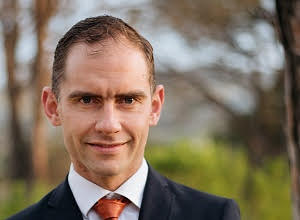The failure of South Africa's tobacco sales ban shows the "painful" limits to forcing social change, writes Stellenbosch University's Prof Willem Boshoff. The overwhelming majority of smokers didn't stop smoking but simply switched to illegal purchases, causing tax revenues to plunge.
Associate Professor Boshoff, co-director of the Centre for Competition Law & Economics and associate professor of economics at Stellenbosch University, specialising in the economics of regulation and competition, writes:
After the declaration of a national disaster in March last year the government imposed temporary, but controversial, bans on tobacco and (recurrently) alcohol sales as part of its response to the pandemic. These were intended to curtail the consumption of tobacco and alcohol.
However, it is not clear that the sales ban has been in any way successful. It has starved the Treasury of much-needed tax revenues. In 2020, government revenues fell by more than 10% and the fiscal deficit more than doubled. With substantial revenues usually coming from the so-called sin taxes, the sales ban has proved a costly decision.
The sales bans may also have had a more limited effect on consumption than was expected. Though the sale of legal, tax-paid tobacco came to a halt, there is evidence that many smokers purchased illicit, tax-evading alternatives on a large scale. A recent study by the University of Cape Town found that more than nine out of 10 smokers continued to purchase cigarettes despite the sales ban.
The tobacco ban appears to have strengthened the illicit trade in cigarettes, possibly permanently. With no tobacco products available via legal means many consumers — even those who would not normally contemplate purchasing illegal goods — bought illicit cigarettes during the ban. The consequence has been increased “normalisation” of tax-evading brands, even to higher-income consumers.
Furthermore, by significantly strengthening the penetration of illegal cigarettes the ban facilitated the creation of new distribution networks. After the ban these alternatives now offer an increasing number of substitutable products to smokers.
This state of affairs is not entirely new. For more than 20 years the government has used excise duties to raise tobacco prices. Based on the presumption that demand for tobacco products does not change much after price increases, this was viewed as a win-win policy. Higher tax rates would, so the argument went, discourage smoking and at the same time increase tax revenues — an attractive combination for policymakers.
However, for many years more and more SA smokers have responded to high legal tobacco prices by switching to illicit brands. Since illicit cigarette manufacturers evade paying excise duties, these brands are considerably cheaper, even when sold at substantial margins.
By the start of last year, before the onset of the pandemic, illicit cigarette sales made up between a third (according to the University of Cape Town) and half (according to manufacturers) of all cigarette sales in SA. So intertwined have the legal and illicit markets become that the price of a cigarette is now far less important to smokers than the price difference between legal and illicit cigarettes. The larger this price difference, the more consumers are willing to switch to illicit brands.
That is why government tobacco excise revenues increased in 2019/2020. The price of illegal cigarettes started rising from the end of 2018 (for the first time in several years). This brought the prices of illicit brands closer to those of duty-paid brands. Consequently, consumers had less of an incentive to purchase illicit cigarettes, which supported legal sales in this period.
Nonetheless, proponents of tobacco control have downplayed illicit sales over many years, and some are now using the apparent “success” of the ban to argue for even higher taxes. But the evidence emerging since the ban is a painful reminder of the limits to policies aimed at forcing social change.
There is a trade-off between reducing consumption and not incentivising the large-scale switching to illegal purchases. In a country with an established illicit sector, pushing prices for legal goods too far from those of illicit goods merely provides an even greater incentive to consumers to find cheaper alternatives.
Illicit manufacturers have every incentive to nurture the market share they have gained during the sales ban. By keeping illicit price increases in check, they can continue to maintain the price difference to their advantage. It follows that the strength of the illicit trade makes large excise duty increases a particularly poor strategy for generating tax income.
Instead, policymakers must first attend to the illicit trade in tobacco and alcohol and consider the various alternatives to managing consumption of these goods. Measures will be needed to recapture legal sales from the illicit trade, including better monitoring and auditing of manufacturers and importers. Only once illicit supply chains have been combated should the policy on excise duties be revisited.
Without such a sequential policy approach tax hikes will merely harm legal industries further, damaging tax revenues and undermining the government’s ability to influence tobacco and alcohol consumption in future.
This analysis was first published on BusinessLIVE. It is republished as a MedicalBrief Open Access article with the author's permission.

